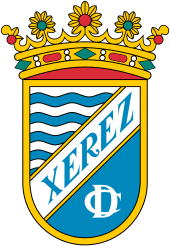The Muslim settlers from nearby North Africa called the settlement Scheris which derived the names Jerez and then Sherry.
The area was home to a "Roma" (wandering ,gypsy) community known as the "Gitanos", a hot bed of flamenco. In early fixture cards at Charterhouse, the football XI played a team called Gitanos. Whilst I don't know the exact origins of the opposition's name, my bet is that either an Old Carthusian footballer had travelled to Andalusia and adopted the tribal name for his old boys' team or had heard about the Gitanos and named his wandering team when they visited the school to play the emerging game of Association Football.
While we were in Jerez, we took in the "Escuela Andaluza del Arte Ecuestre" (the Royal Andalusian School of Equestrian Art). This was a wonderful place devoted to very smart horses doing very smart things. This region's link to the great game of English football was further enhanced when my travelling companion, Jerry (note closeness of name to sherry), noticed this sticker in the gents' lavatory at the horsey visiting centre. You are never far away from English football "yobs" or the Albion!
Jerez hosts a Circuito Permanente de Velocidad , a motor cycle and car venue with Grand Prix connections. Of course, there is a soccer team called Xerez Club Deportivo founded in the late 19th Century by a British wine maker Sir Thomas Spencer, who worked for the Williams and Humbert Winery. It was then known as Sociedad Jerez Futbol Club. The club was formalised in 1947 and named Jerez Club Sportivo. The Azules (The Blues) presently play at the Estadio Municipal de Chapin, which holds 20,000 and hosts equestrian events when needed. They are a Tercera Division club.

Finally, the link with Charterhouse and Carthusians goes on at La Cartuja monastery founded in the 15th Century. An architectural gem amid superb gardens, the Carthusian monks were credited with breeding the very special Spanish thoroughbred horse, the impressive Cartujano or Andaluz, known for its grace and temperament (like all Cartusians!).
In the early 1950s, the monastery was returned to the monks, a closed religious order. Yes, we did see some horses strutting their stuff.

No comments:
Post a Comment